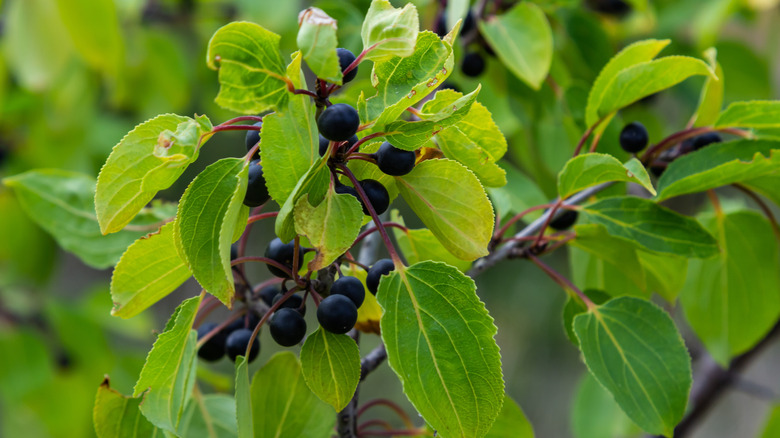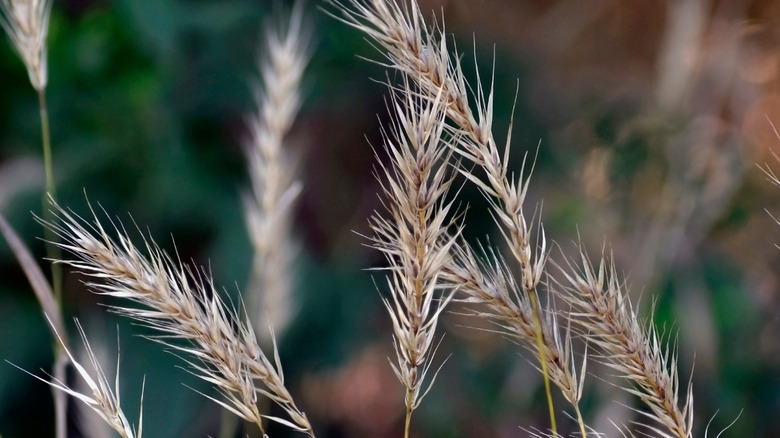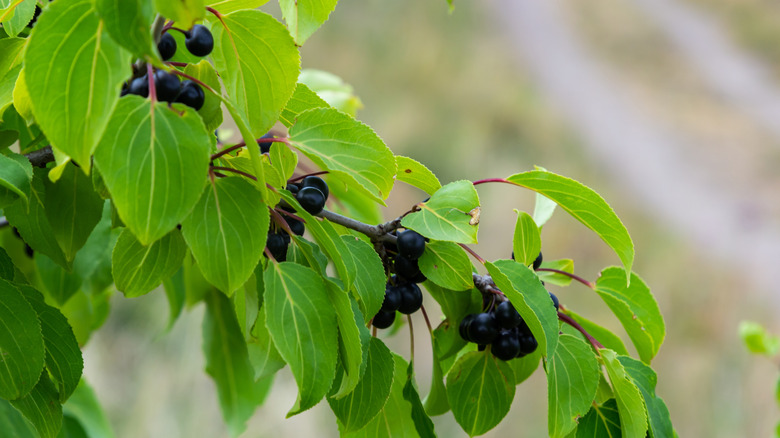The Secret To Fighting Invasive Buckthorn Is Native Minnesota Plants
Invasive species — whether plant or animal — can wreak havoc on local ecosystems (just take a look at the invasive species that's destroying Texas if you need a reminder). In Minnesota, buckthorn (Rhamnus cathartica) is an invasive plant that the state's foresters and park managers have been trying to keep from choking out its natural habitats for hundreds of years.
Originally introduced as an ornamental landscaping tool in the late 19th century, buckthorn's appeal at the time — its quick-growing, resilient nature — would ultimately make it a potent threat to local Minnesota ecosystems. Buckthorn is an aggressive grower, forming dense thickets that completely crowd out native vegetation and disrupt wildlife habitats. Traditional removal methods such as cutting and herbicide application can ultimately fail, since the plant's robust root system and the ability of its seeds to lay dormant in the soil make it a perennial threat.
However, recent studies offer new hope. Dr. Michael Schuster, a scientist at the University of Minnesota's Department of Forest Resources, has been studying buckthorn for years. Schuster and other collaborators have put their knowledge into a guide for foresters and park managers on how to best combat the plant. And as it turns out, buckthorn's biggest enemy might just be the plants playing on Minnesota's home team.
How native plants can beat buckthorn
Minnesota's native grasses and wildflowers can play a pivotal role in beating back the invasive plant buckthorn, which possesses a key advantage in its ability to retain leaves late into the fall. Using that extended growing season, it gathers the resources it needs for survival. But by cutting down mature buckthorn stems and immediately planting fast-growing native grasses like Virginia wildrye (pictured above) in its place, the buckthorn gets a taste of its own medicine, getting crowded out and denied the vital late-fall light it needs to keep growing.
"It's a race against time," Dr. Michael Schuster said while speaking to the Minnesota Star Tribune on his research. "We're seeing that if you can grow and quickly establish this thatchy layer of grasses, it shades it out right when buckthorn is in most need of light."
Schuster and his team's latest research also details the effectiveness of controlled burns in the fight against buckthorn. One of the problems in conducting such burns is the lack of available natural fuel in areas where buckthorn has been cut back — another downside of the plant's growth monopoly. But Schuster and his coauthors discovered that not only does planting native grasses reduce the amount of light that buckthorn can access, but the presence of these native grasses provides excellent fuel for controlled burns to suppress buckthorn regrowth. One year after burning, native grass-seeded plots showed a 72% reduction in woody buckthorn coverage compared to areas that weren't seeded.
A blueprint for success
In May 2024, Dr. Michael Schuster and his team released a comprehensive guide to help land managers tackle buckthorn infestations. This resource, developed through years of field research, synthesizes the best available knowledge on forest understory revegetation and is meant to promote biodiversity — buckthorn's greatest victim.
When the plant invades an area, it creates a "green desert," Schuster told the Minnesota Star Tribune. "All that's left is just a perpetual hedge, with little biodiversity." The guide provides actionable steps for restoring forest understories, including recommendations for seeding native species, timing prescribed burns, and monitoring regrowth. As Minnesota fights against its invasive species, these management practices could serve as a model for other states grappling with similar challenges.
Biodiversity is crucial to the sustainability of vibrant, healthy ecosystems. Recently, scientists discovered alarming climate data while studying tropical forests that could spell disaster for the biodiversity of these ecological refuges near the equator. Such losses are dearly felt in the battle against climate change and can even lead to extreme efforts in the scientific community, like bringing the Tasmanian Tiger back from extinction.


